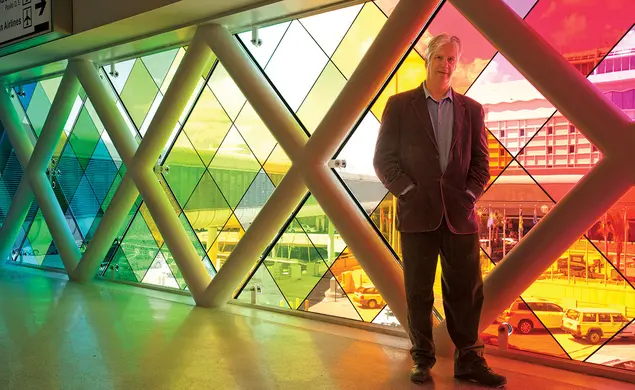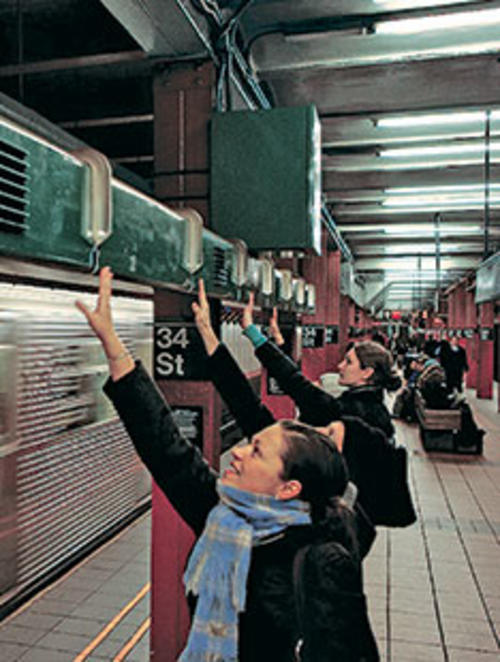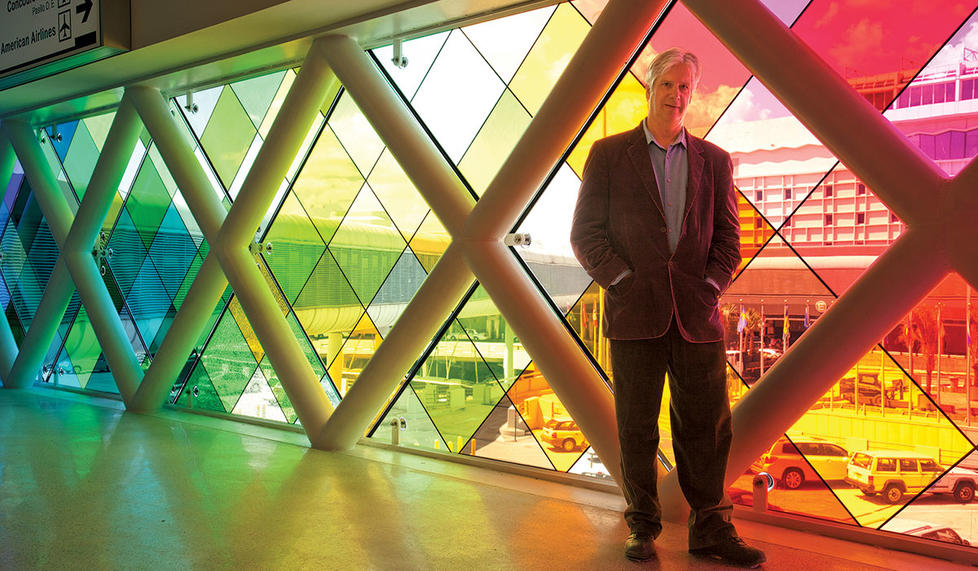Christopher Janney ’72: A Symphony for the Senses
 Prince-JHarmonicRobinHillnew.jpg
Prince-JHarmonicRobinHillnew.jpgBetween his sophomore and junior years, Chris Janney ’72 left Princeton, disappointed with his experience in the architecture school. Janney had wanted to design and build three-dimensional sculptures, not study urban planning or sketch blueprints. During his time off, he played drums at Berklee College of Music in Boston and then stayed to perform with several bands. In his spare time, he built abstract wooden sculptures. One day, he painted his bedsheets in a riot of color with acrylic paint and magic markers, then slept in them. “I woke up and had paint all over me,” says Janney, sitting on the piano bench of a baby grand in his Concord, Mass., studio. “I’m always asking, what can I do to just climb into the art, climb into the color, and into the experience?”
In one way or another, Janney has spent his four-decade career as an artist trying to re-create that immersion. With names like Soundstair and Harmonic Convergence, his most successful sculptures have transformed environments into interactive sensory feasts full of sound, light, and color.
Returning to Princeton after a year of waiting tables and painting houses, he applied for an independent major, cobbling together courses that included 3-D architectural modeling with Michael Graves; visual-arts courses with James Seawright, an early pioneer in kinetic and electronic sculpture; and art theory with Rosalind Krauss, an art critic credited with introducing postmodern theory to the American art world. “That was what really set me on the path of being able to somehow combine visual art and music in an architectural context,” he says.

The image led to the creation of Soundstair at Boston’s Museum of Science, an art piece using motion sensors to turn visitors’ steps into musical tones. When he first installed it in 1973, however, he had no idea how immersive the experience would be. Instead of the individual musical lines he heard in his head, the stairway exploded into a symphony of sound as children and grown-ups began playing with each other, working together on their own impromptu compositions. “You can’t not react to people around you when you are on the Soundstair together,” he says. “It completely blew me away. It was so much more than I ever imagined it to be.”
The experience set him on a course of creating interactive environments in public spaces wherever he could.
For Harmonic Convergence in 1997, one of his first commissions, the Miami International Airport gave Janney a 200-foot-long glass corridor with two people-movers down the middle. Janney rigged pillars with motion detectors to import the sounds of the Everglades and other natural locations in South Florida as people passed through. He covered the glass walls with panels in 132 different colors, creating an immersive kaleidoscope. “It’s like walking through a rainbow, only now the bedsheets are transparent colors and shadows,” he said. “This isn’t virtual reality. It’s hyper-reality.”
His main focus, however, remains creating absorbing architectural environments. His Reach: NYC, installed in 1995, turns the 34th Street subway station at Herald Square into a musical instrument, and he has created dozens of Soundstair installations, including several in children’s hospitals, where they bring brief solace to families. “Children at the top of the stairs are in tears, but by the time they get to the bottom they are laughing,” he says of one Soundstair at Boston Children’s Hospital. A current project will transform the entryway of the children’s hospital in Baton Rouge, La., with light, color, and soothing sounds. “I am trying to contribute to creating a healthier, more life-supporting place,” says Janney.
The Latest
See all







